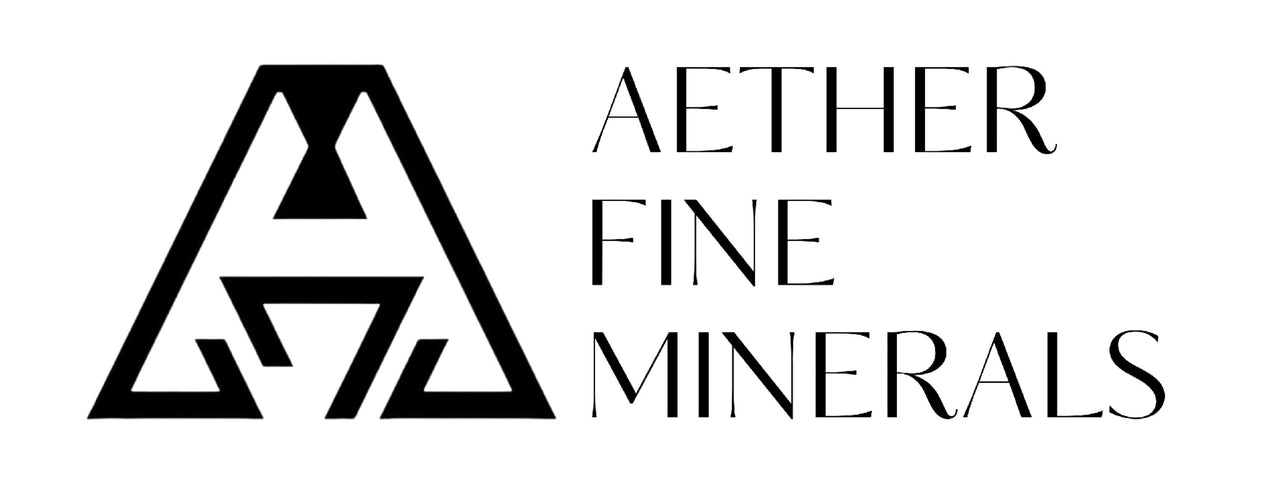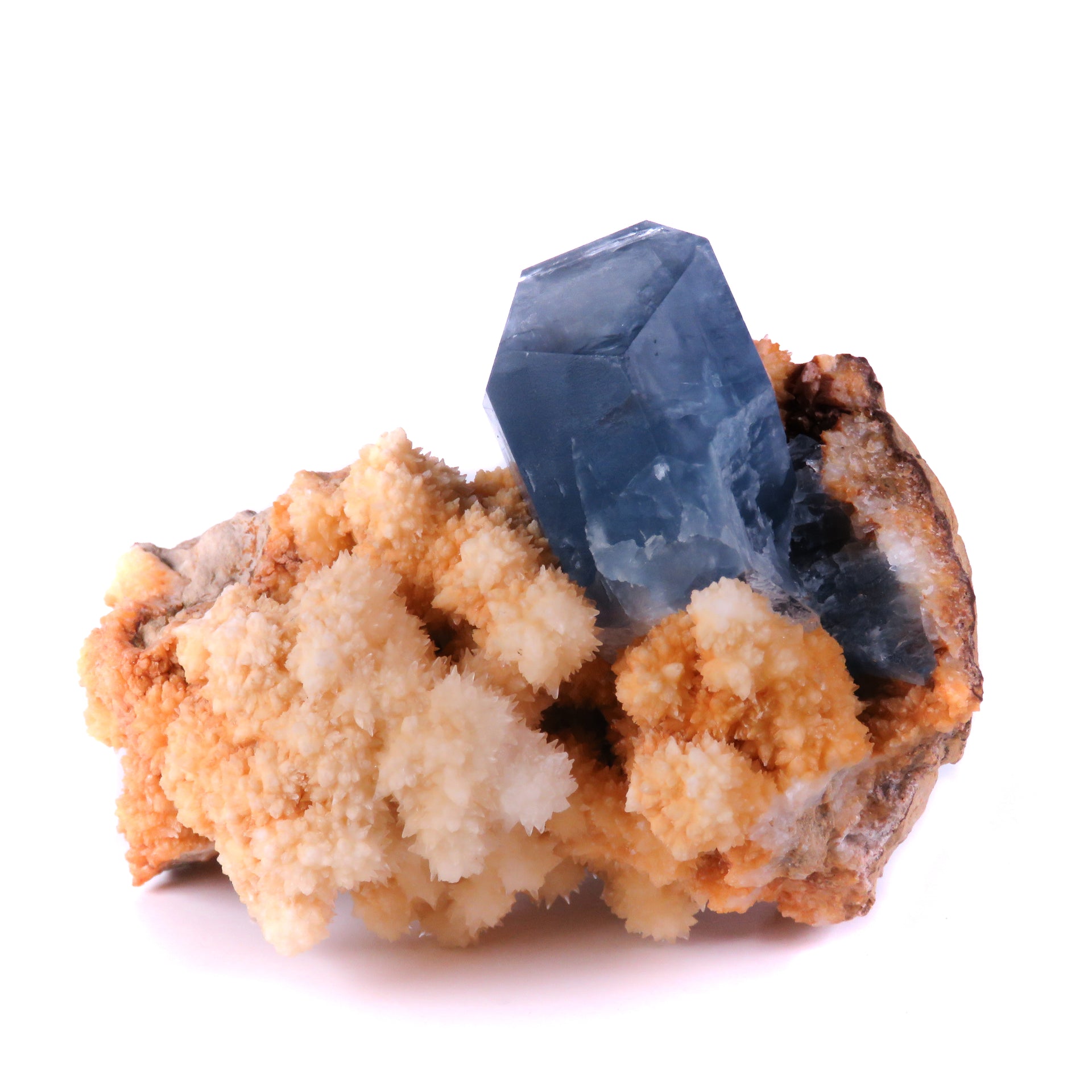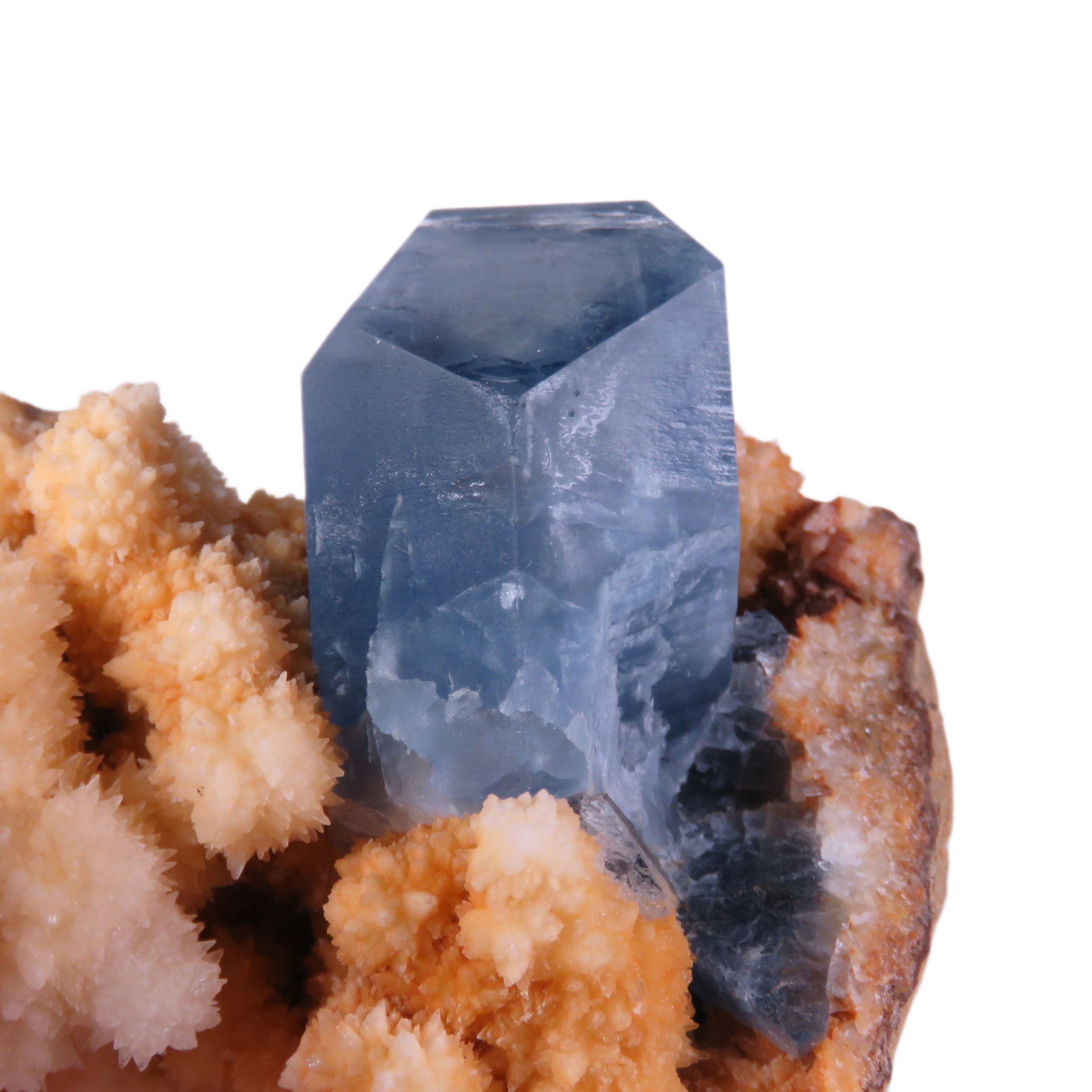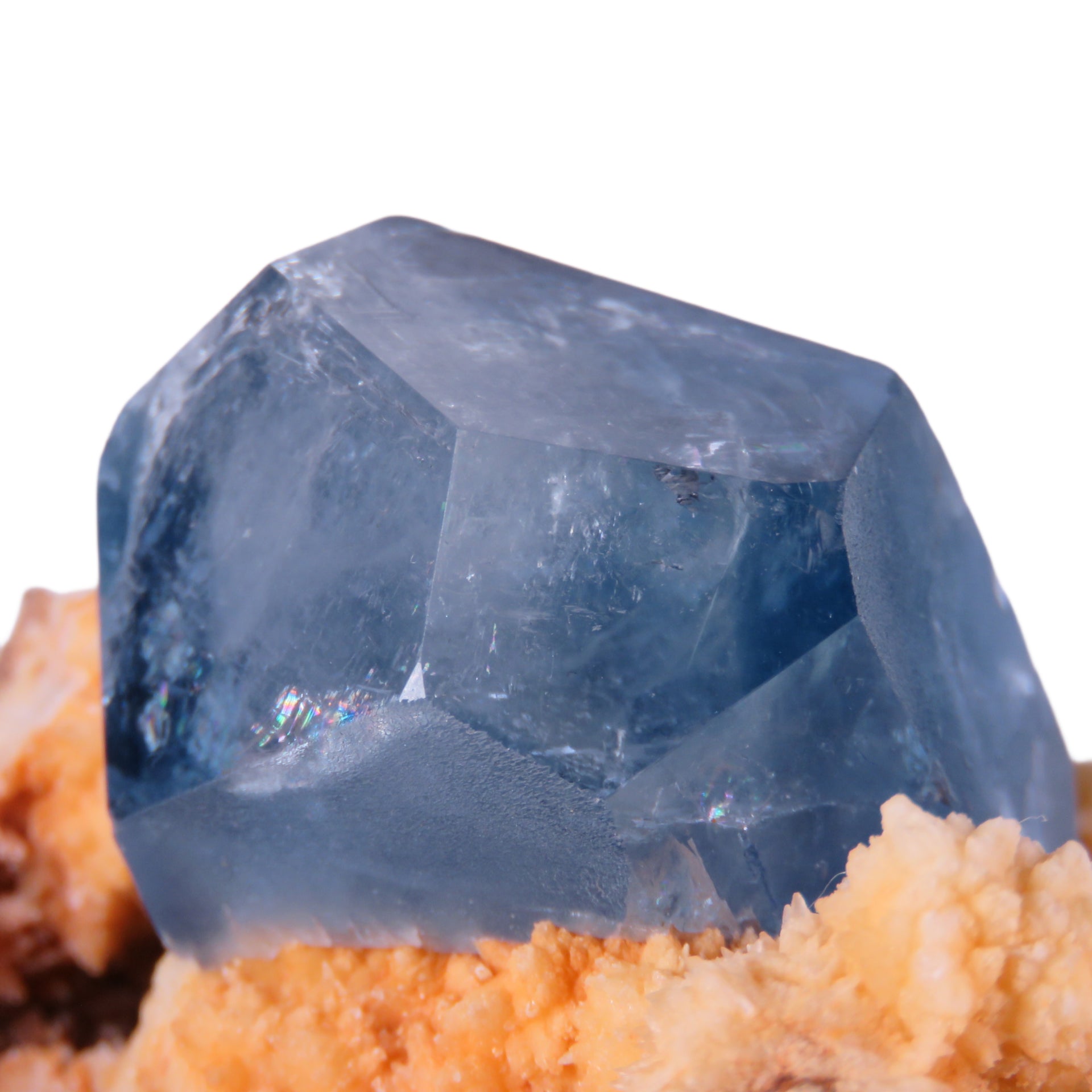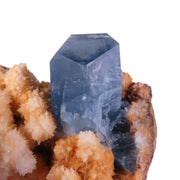CELESTINE ON CALCITE
When celestine specimens from this location hit the market a year ago, they instantly became known as some of the finest ever found. Few localities worldwide can boast the same alluring blue that these ones have, derived from the high cobalt content within. The crystal here is thick and measures 3.2cm in length, sitting beautifully on a sculptural background of beige to yellow-orange calcite. A large majority of pieces you'll find on the market from here have smaller crystals, paler color, and/or significant damage. The only flaw I can see on the main crystal is one contact point where it was grown together with another, and even this doesn't detract from it in my eyes. Balanced, attractive, and one of the finest examples you'll see of material that is getting harder and harder to find on the market.
More info:
Darai Laman celestine-calcite deposit, hosted within Jurassic limestone sequences, exhibits characteristic void-filling mineralization where well-formed prismatic celestine crystals reaching 12 cm are overgrown by later scalenohedral calcite. Host rock dissolution patterns control the distribution of mineralization, which formed through the interaction of meteoric waters with basinal brines at temperatures between 50-70°C, as indicated by fluid inclusion data. Isotopic signatures suggest strontium mobilization from the surrounding carbonate sequences, while the overall paragenetic relationships and mineral assemblages reflect typical features of epigenetic celestine-calcite deposits in carbonate terranes. The mineral textures and fluid-rock interaction patterns observed at Darai Laman represent a classic example of this style of mineralization, demonstrating the characteristic evolution of hydrothermal systems in carbonate host rocks.
